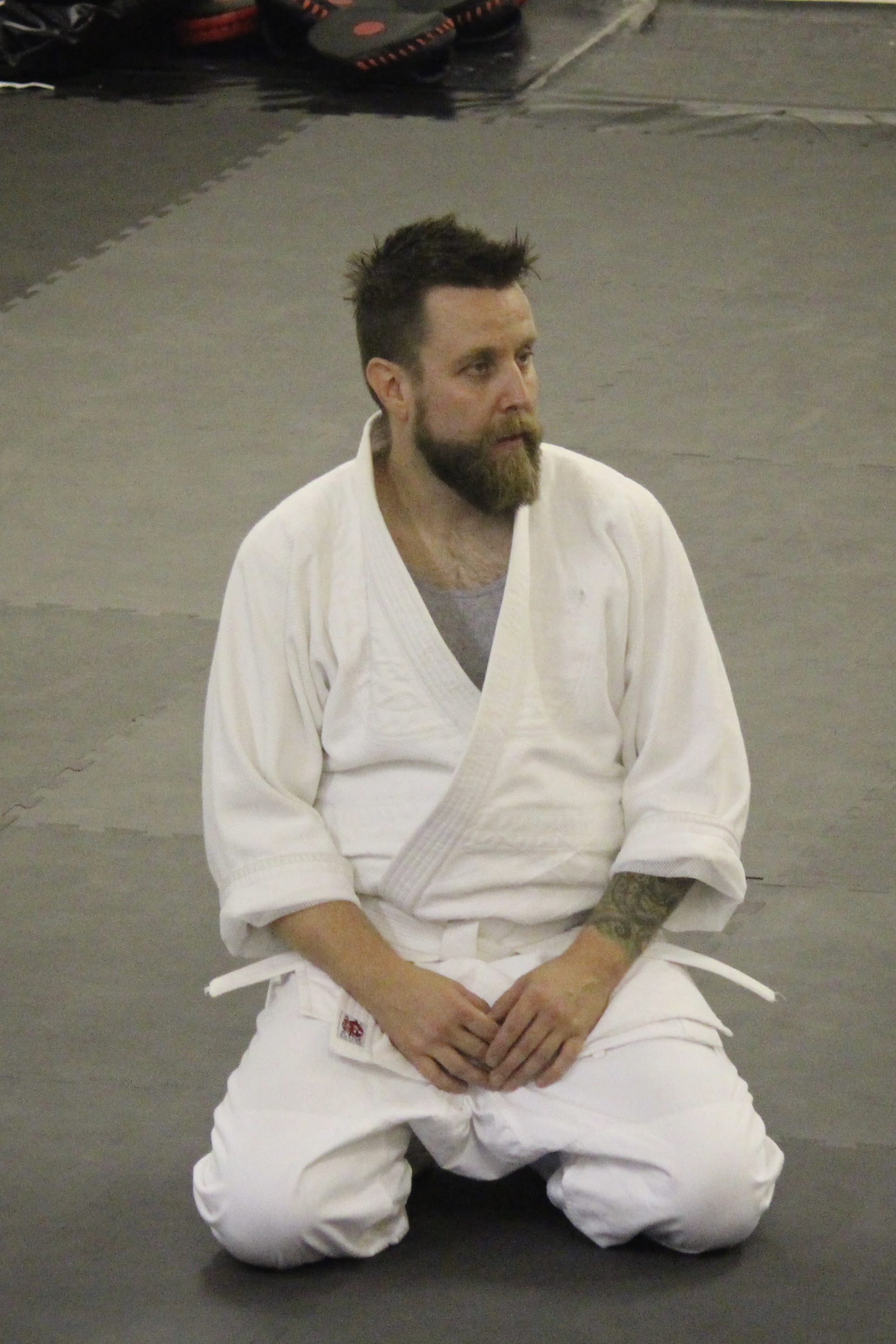Originally Posted on February 22, 2012 by Karri
There seems to be a lot of misconceptions about the purpose of rei, or bowing at the beginning and end of our martial arts practice. I’ve heard students confuse it with worship, prayer or showing subservience to the instructor. Depending on the cultural and historical background you come from, you may very well interpret the motions differently.
For example in Europe, up into the recent past, bowing was a sign of gratitude. Even today, actors bow to show appreciation in response to applause. However, this is seldom done while kneeling. This might have something to do with fine fabrics and dirty floors, but who knows. Then if you take a look at traditional Hindu culture, bowing is a sign of deference, as a child to a parent or a display of a significant difference in social standing. While the posture may be the same, the intent is very different. In traditional Chinese and Tai culture, bowing is typically for rituals such as weddings and showing respect to the dead, and has replaced the Kowtow or low kneeling bow. It is also a very formal sort of apology.
In religious settings bowing has a very different interpretation. Islam reserves bowing strictly for prayer, and it is considered a sin to do so for any other reason. The bow is executed kneeling and both hands and the forehead touch the ground. It is almost identical to Buddhist prostration which devout practitioners will do 1080 times a day. Some Christians kneel during mass but many more simply bow their heads, especially when praying, and will often clasp their hands..
So, we’ve gone from saying “thank you” to “I’m sorry” and from situations as public as a theater to as intimate as a person’s relationship with their god. So it’s easy to see how a motion of the upper body can be taken a lot of different ways. So, in order to be as clear as possible, we need to look at the meaning of bowing in traditional Japanese society.
Bowing is Japan is most commonly done as a greeting. Americans might think of waving hello, or shaking hands as an equivalent. The reason we start by kneeling in seiza, is because until recently that is how Japanese people sat all the time. So to a Japanese person walking in on a classroom of people kneeling and bowing together, it would appear like a group of people sitting together exchanging polite hellos.
The other sort of bow that is very common is a display of gratitude. So, rather than shake hands or hug someone who does something nice for you (especially if you don’t know them intimately) you would bow. These tend to be a bit deeper and more solemn than than casual greetings.
So, as for the physical act of bowing, we are showing mutual gratitude and respect, then showing thanks to the tradition, and our instructor for their knowledge. That’s it.
Now, the more difficult part to explain is the expression “Shikin Haramitsu Daikomyo”. In my interpretation it is a reminder to yourself that you never know when you are going to learn something that will change your life. It is spoken to yourself, but out loud. Just like the student creed and code of mindful action. It is not directed to the instructor or any deity. The clapping is intended to clear the mind of negative thoughts and direct them to be “in the moment”.
If you are still confused or unsure, ask yourself this: “What am I here to learn?” Odds are you study martial arts to feel safer and more confident, as well as learn about yourself and hopefully grow as a human being. We as instructors can’t help you do this by secretly indoctrinating you into a cult or reciting mystic mumbo-jumbo. Every action you take in the dojo is done mindfully. We can not and will not make you do anything that goes against your personal wishes or beliefs. However, when you are in the dojo, you are essentially visiting a very small part of a foreign country. So do your best to respect the traditions and culture that are going on around you. It makes training more effective and more interesting.

